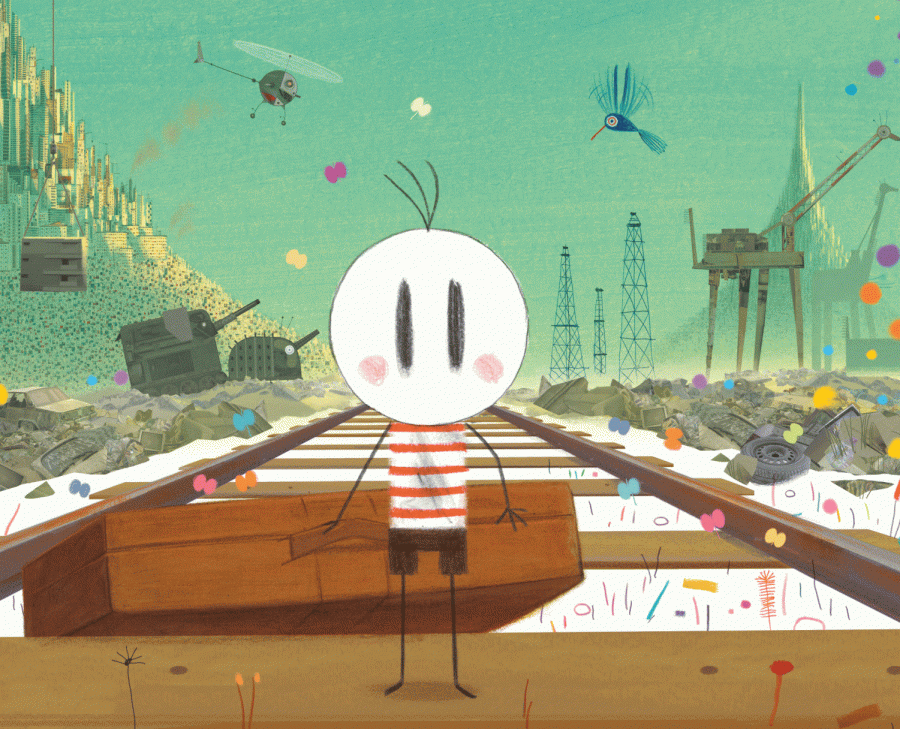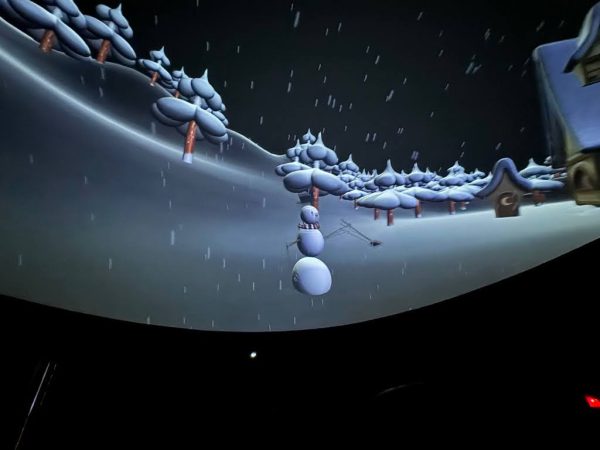‘Boy and the World’ Celebrates Beauty of Life in the Face of Hardship
Brazilian filmmaker Alê Abreu’s animation “Boy and the World” (2013) enthralled the Golden Auditorium audience Friday, October 14. The movie, screened as part of Colgate’s Friday Night Film Series, follows the adventures of a young boy, Cuca, as he embarks on a journey through small villages and modernized cities in pursuit of his father. A beautifully crafted and visually stimulating film, “Boy and the World” also delivers a powerful message about the consequences of industrialization. It is certainly not your typical cartoon.
The film initially captivates with its whimsical and vibrant
images. Abreu effortlessly combines visual and digital arts to produce views reminiscent of childhood drawings. Indeed, Cuca’s world seems to burst from a Crayola box. Its unapologetic explosions of color make even an adult viewer feel a sense of giddiness. Watercolor, crayon and computer graphics somehow seamlessly come together to create a truly kaleidoscopic visual experience.
The music, too, contributes to the film’s character. The movie is primarily absent of dialogue; its original soundtrack acts as the narrator. The music adds an overall mood to each scene: it tells viewers whether they should feel suspenseful, hopeful or somewhere in-between. Furthermore, it supplements visuals. In forest scenes, sounds like bird chirps and rippling rivers are interwoven in the music to add to the on-screen narrative. First-year student James Heatherton particularly enjoyed this mode of storytelling.
“I thought the use of sound along with visual made the movie all the more interesting,” Heatherton said.
While Cuca’s adventures seem lighthearted and abstract at first, viewers soon realize their implicit commentaries. In Cuca’s village, music, art and animation prompt the release of color into the air. As the boy journeys around the world, however, it grows clear that color is not everywhere. Color and creativity is suppressed by industrialization and urbanization. In one scene, a colorful phoenix representing “the people” battles a large, black bird, representing the government and military. Associate Professor of Film and Media Studies Ani Maitra elaborated on the meaning embedded in the scene’s visuals.
“The animation itself is multilayered, deftly combining the sparse line drawings on a white page with the rich tapestry of colors and the emotions they evoke,” Maitra said. “The fiery hues of the phoenix represent a spirit of creation and regeneration, the blackness of the urban noises underscore the dehumanization brought about by development.”
As Cuca transverses polluted lands and commercialized cities, Abreu’s message becomes clearer. The most obvious display of this message occurs in a “real footage” montage of forest fires, lumberjacking and oil spills.
The film does end on a hopeful note. After a period of pollution, Cuca’s village begins to flourish again. Children sing songs, people make art and plants regrow. If we resist, imagine and create, Abreu communicates, the world can retain its kaleidoscopic beauty. Enchanting and enlightening to viewers of all ages, “Boy and the World” is a celebration of possibility and play in the face of hardship.






